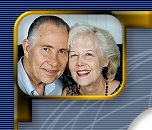


|
YOM KIPPUR - THE DAY OF ATONEMENT How can sinful man live in perfect peace and harmony with the perfectly holy God? This is the most pertinent question that mankind can ask for it involves all that is good in earthly life and eternity. GOD'S HOLINESS "For I am the LORD your God. You shall therefore consecrate yourselves, and you shall be holy; for I am holy. . ." Leviticus 11:44. The fundamental meaning of holy is "separate from sin". MAN'S SINFULNESS "The LORD looks down from heaven upon the children of men to see if there are any who understand, who seek God. They have all turned aside, They have together become corrupt; There is none who does good, No not one." Psalm 14:2,3. Man has no answer as to how sinful man can be reconciled to a holy God. Every formula of man and every effort of man falls short "for all have sinned and fall short of the glory of God." Romans 3:23. GOD MUST PROVIDE FOR MAN'S RECONCILIATION Man's disobedience to God and the consequent sinful permeation of his nature came as no surprise to God. God made a plan whereby all mankind who truly desires to do so can be reconciled to Him. ". . .Knowing that you were not redeemed with corruptible things, like silver or gold...but with the precious blood of Christ, as of a lamb without blemish and without spot. He indeed was foreordained before the foundation of the world, but was manifest in these last times for you." 1st Peter 1:18, 19. GOD GAVE PICTURES OF HIS SALVATION PLAN God's plan of salvation required an innocent substitute to receive the sentence of death instead of the people who committed the sin. This can be seen in the skins of animals providing an acceptable covering for Adam and Eve to fellowship with God once again. (Genesis 3:21). It is seen in Abel's sacrifice of a lamb (Genesis 4:4; Hebrews 11:4). It is seen in the ram being sacrificed instead of Isaac (Genesis 22; Hebrews 11:19). It is seen in the blood of the Passover Lamb providing protection from death to the firstborn of Israel (Exodus 12:12, 13). It was seen in all the sin offerings by the priests of Israel (Hebrews 8:4, 5); 9:24; 10:1). The picture that gave the fullest and clearest picture of the sacrifice of Christ was Yom Kippur-The Day of Atonement. For devout believers in Israel it was the holiest day in the year. THE PURPOSE OF THE DAY OF ATONEMENT In the Bible the Hebrew root word for atonement (kaphar) carries the meaning "to cover" with the goal of bringing at-one-ment between God and man. "For on that day the priest shall make atonement for you, to cleanse you, that you may be clean from all your sins before the LORD." Leviticus 16:30. The Tabernacle was the center of Israel's camp. Three tribes were camped on each of the four sides of the Tabernacle. It consisted of an outer court surrounded by a linen fence, except for the entrance on the eastern end. The Tabernacle building was approximately fifteen feet wide and forty-five feet long. It was divided into two sections. The Holy Place was fifteen feet wide and thirty feet long. The Holy of Holies was a cube of fifteen feet. Between the entrance and the Holy Place was a brass altar where sacrifices were made. Outside the Holy Place was a laver of water for washing. Inside the Holy Place were three articles of furniture: the menorah or lampstand, the table of shewbread and the table of incense. Inside the Holy of Holies was the Ark of the Covenant. It contained the two stones upon which God had written the ten commandments. The Mercy Seat was like a lid on top of the ark. Two golden cherubim looked down on the Mercy Seat from each side. Aaron's rod was also in the Holy of Holies as a reminder that he was God's chosen high priest. God dwelled in the Holy of Holies in the form of fire glowing through a cloud pillar. This pillar of cloud and fire led Israel through forty years in the wilderness. When it stopped the Levites would set up the Tabernacle with the Holy of Holies located directly below the pillar. The twelve tribes would set up their camps in their assigned places. The pillar of fire and cloud would descend into the Holy of Holies. Israel knew that God was holy from the perfect law He had given and ways that He enforced that law. Alongside of plagues that took the lives of thousands for disobedience the two sons of Aaron were slain for coming into the Holy Place at the wrong time or in the wrong way, and possibly under the influence of alcohol. The day they were slain was the day God chose for the Date of Atonement to be observed (Leviticus 16:1-3). Israel also knew they were a sinful people and they were grateful God provided a way for their sins to be punished and separated from them. This enabled them to be in fellowship with their God Who was holy, but also loving and gracious. THE PERSON WHO CONDUCTED THE ATONEMENT The High Priest Along Did The Work. Aaron, the High Priest executed all activities of the Day of Atonement. Although other priests and Levites had been involved in the preparations it was the High Priest who did all the work on the Day of Atonement. "There shall be no man in the tabernacle of meeting when he goes in to make atonement in the Holy Place, until he comes out, that he may make atonement for himself; for his household, and for all the assembly of Israel." (Leviticus 16:17). This reminds us of how Jesus was alone as He agonized in Gethsemane and His sweat became as great drops of blood. He prayed: Father, if it is Your will, take this cup away from Me; nevertheless not My will, but Yours be done." (Luke 22:42, 44). Jesus was alone as He endured the scorn and insults of Israel's rulers. He was alone before Pilate and Herod. He was alone as the soldiers pressed a crown of thorns on His head; beat Him with whips and tore His beard from His face. He was alone on the sorrowful walk of the Via Dolorosa. He was alone as He suffered on the cross for our sins. Yet, when Jesus triumphantly said, "It is finished" the work of redemption was complete and available to all mankind. THE HIGH PRIEST HUMBLED HIMSELF. He must remove his regal High Priest's garments that were referred to by the people as "his golden garments". After that, he must wash himself and put on the white linen garments of the common priest in which he did all his work. This was a picture of Jesus Who "being in the form of God...make Himself of no reputation, taking the form of a bondservant, and coming in the likeness of man...He humbled Himself and became obedient to the point of death, even the death of the cross." (Philippians 2:6-8). THE HIGH PRIEST WAS REQUIRED TO REMAIN CLEAN There were times when he bathed his whole body and times when he washed his hands and sometimes his feet. He had to be clean to make an atonement for others. Even so, we read of Jesus, ". . .Who through the eternal Spirit offered Himself without spot to God. . ." (Hebrews 9:14). THE HIGH PRIEST WAS REQUIRED TO MAKE ATONEMENT FOR HIMSELF Before He Could Make Atonement For The People. "Thus Aaron shall come into the Holy Place: with the blood of a young bull as a sin offering, and of a ram as a burnt offering:" "Aaron shall offer the bull as a sin offering, which is for himself, and make atonement for himself and for his house." (Leviticus 16:3, 6. See also 16:11-14). The High Priest was instructed to kill the bull for a sin offering and catch its blood in a bowl. He was to take that bowl of blood, a pan of burning coals from the altar, and a hand full of incense into the Holy of Holies. He dropped the incense on the burning coals creating a smoky cloud of sweet incense. He then sprinkled some blood on the mercy seat and on the ground in front of the mercy seat. God was indicating that even though the blood of animals cannot take away sin He would look at that blood through smoke and accept it as the blood of the coming Savior. The High Priest would become ceremonially clean in the eyes of God and thus empowered to make atonement for the sins of the people. This he did in a similar manner with the sacrificial goat. The New Testament fulfillment is described in Hebrews 7. Jesus was not empowered to offer sacrifice by the blood of animals but by the oath of God. "The LORD has sworn and will not relent, You are a priest forever according to the (eternal) order of Melchizedek...a High Priest...fitting for us, who is holy, harmless, undefiled, separate from sinners, and has become higher than the heavens; who does not need. . .to offer up sacrifices, first for His own sins and then for the people's for this He did once for all when He offered up Himself." (Hebrews 7:21, 26, 27). THE PROCESS OF THE ATONEMENT. The Congregation Afflicted Their Souls Throughout The Day of Atonement. (Leviticus 16: 29). They searched their hearts; acknowledged every known sin; admitted their guilt and the righteous condemnation of their sin. They also confessed their desperate dependence on God to grant atonement for their sin.
The Congregation Provided Two Goats.
And he shall take from the congregation. . .two kids of the
goats as a sin offering. . ." (Leviticus 16:5).
The two goats were paid for from the public treasury and pictured
God's plan to atone for His people's sins. Those who have accepted Christ's sacrifice as being made for them and have trusted Jesus to be their Savior on the basis of that sacrifice can rejoice even more. Jesus affirmed, "Most assuredly, I say to you, he who hears My word and believes in Him who sent Me has everlasting life, and shall not come into judgment, but has passed from death unto life." (John 5:24). THE HIGH PRIEST CLOSED WITH BURNT OFFERINGS. The High Priest removed the white linen clothes in which he had conducted the atonement. He bathed himself; put on his golden high priest garments; went out to the brass altar and offered a burnt offering for himself and the people. The carcasses of the sacrificial offerings were burnt outside the camp. The sins of the people had been covered and there was nothing between God's people and their God for another year. We read of Jesus, "But this Man, after He had offered one sacrifice for sins forever, sat down at the right hand of God, from that time waiting till His enemies are made His footstool. For by one offering He has perfected forever those who are being sanctified." (Hebrews 10:12-14). Through faith in Jesus Christ you can be one of those who are perfected forever by His one offering.
Copyright © 2002
Thomas E Berry
Copyright © 2008 Truth Helpers Inc.
|

